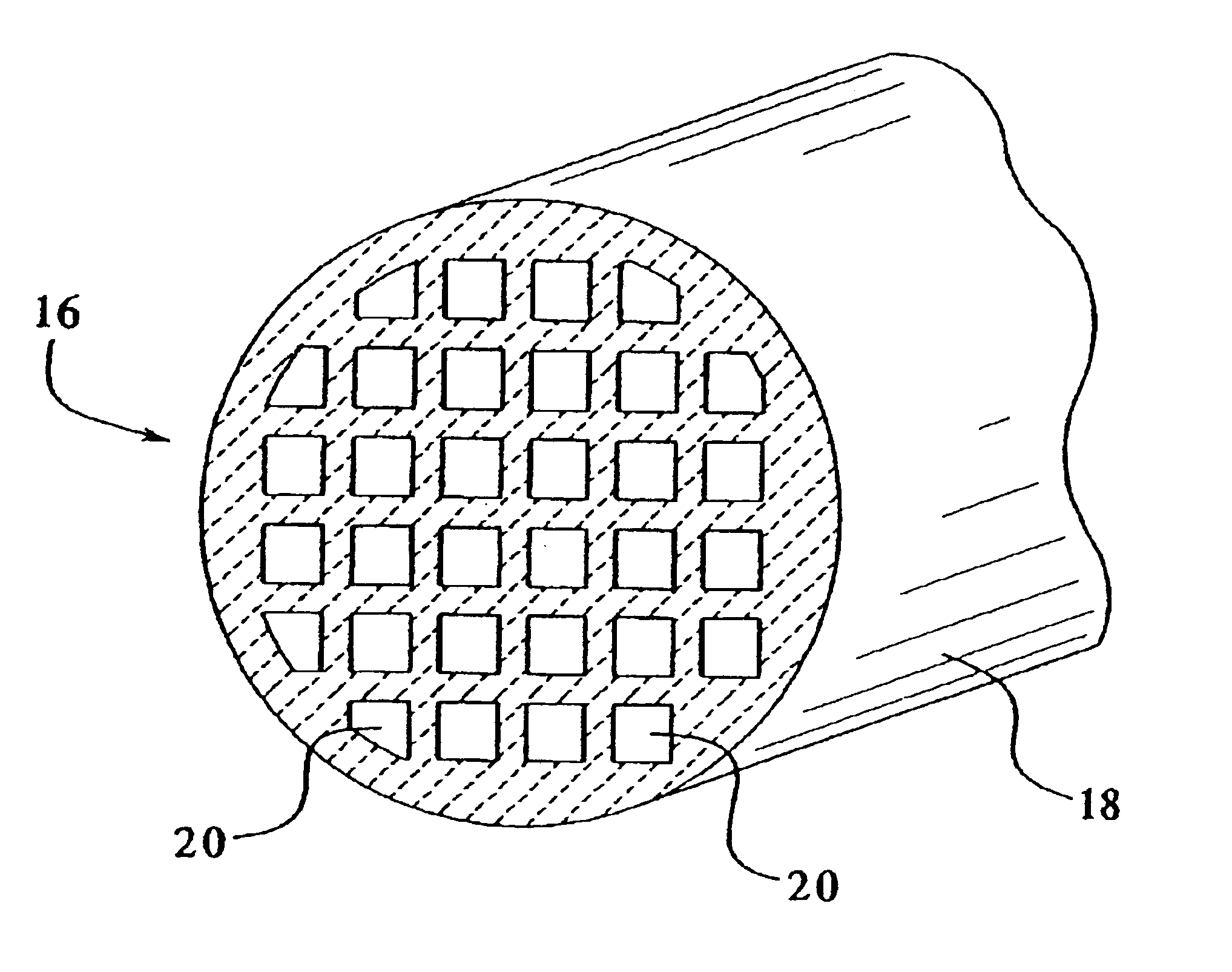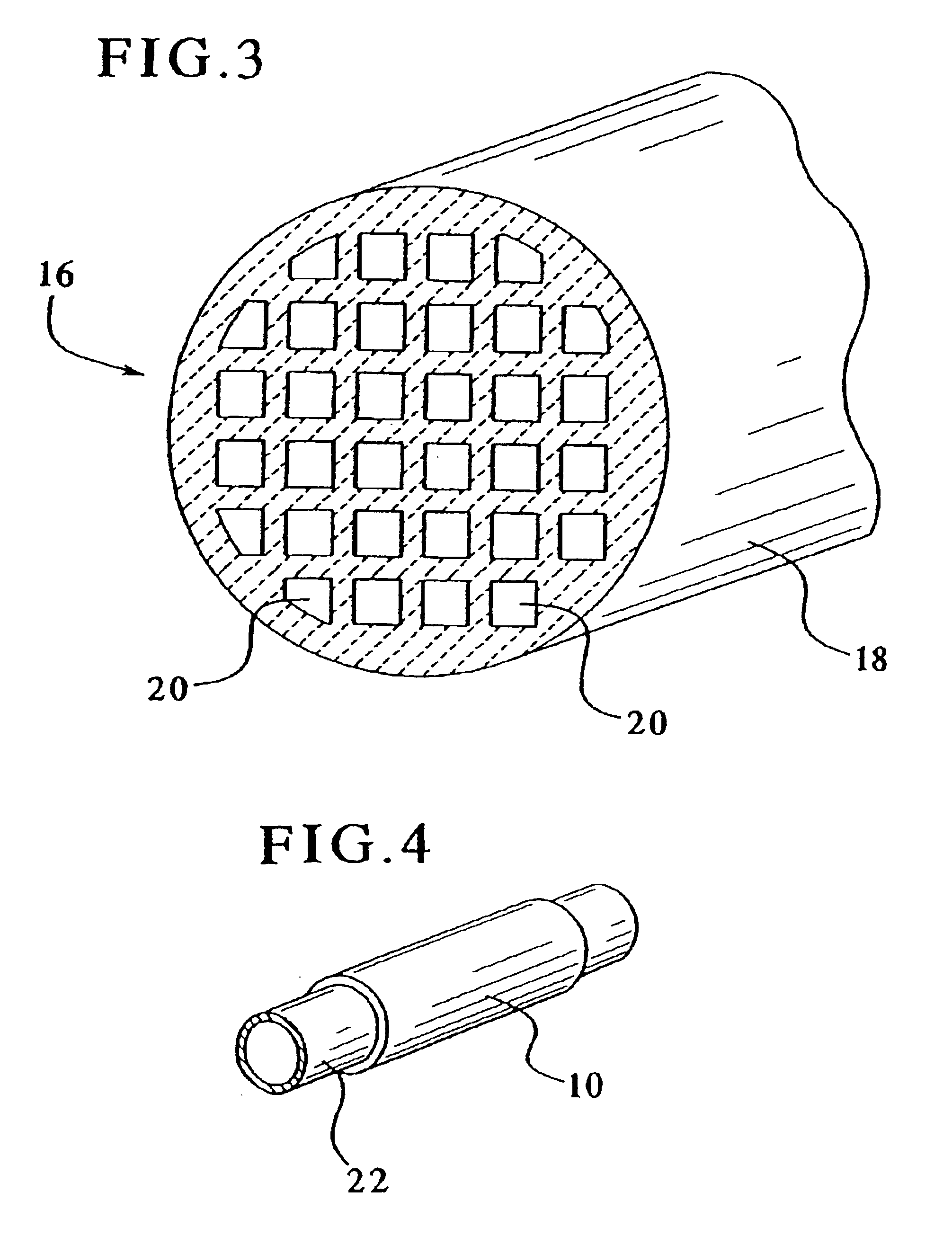Apparatuses, devices, systems and methods employing far infrared radiation and negative ions
a technology of applied in the field of apparatuses, devices, systems and methods employing far infrared radiation and negative ions, can solve the problems of negative ion technology, increased costs associated with those processes, and inability to emit negative ions at room temperature, so as to improve water purification processes, improve fuel or natural gas processes, and reduce emissions
- Summary
- Abstract
- Description
- Claims
- Application Information
AI Technical Summary
Benefits of technology
Problems solved by technology
Method used
Image
Examples
example 1
[0070]A FIR / Negative ion emitting ceramic material in the form of a powder was adhered to a piece of elasticized fabric. The fabric was wrapped around and secured to a fuel line of a motor vehicle, thus allowing the material to substantially contact the exterior of a portion of the fuel line. The elasticized fabric device was secured in place with Velcro™ straps according to an embodiment of the present invention. The motor vehicle used for this test was a 2003 Acura 3.2L TL Type S.
[0071]The motor vehicle was road tested over a period of about one and half months. As indicated below in Table 1, the fuel consumption was measured after driving a certain amount of miles to determine the fuel efficiency in miles per gallon (“MPG”): [t1]
[0072]
TABLE 1AMilesGallonsMPG165.47.08223.35183.67.2225.429173.48.0321.59154.17.2221.343229.411.0320.797210.99.4122.41142.86.7321.218259.710.3725.043226.510.9820.628
[0073]This test was conducted using the same type of gasoline from the same gas station. T...
example 2
[0074]The FIR / negative ion emitting material of the present invention was tested to demonstrate its effectiveness on the reduction of exhaust emissions. A FIR / negative ion emitting material was coupled to the fuel line of a motor vehicle similar to the FIR / negative ion emitting material of Example 1 pursuant to an embodiment of the present invention. The motor vehicle used for this test was a 1986 Honda Accord with a 2.0 Liter, 4 cylinder engine and automatic transmission. The emission tests were conducted at a certified emission test station in Illinois. The car was initially emission tested without the FIR / negative ion emitting material. At that time, the recorded mileage for the car was about 237,000. The FIR / negative ion emitting material was then coupled to the fuel line of the car as discussed above and again emission tested. The results of the emission tests are indicated below in Table 2A. [t2]
[0075]
TABLE 2AFIR / Negative IonTestInitialEmitting MaterialCO Emissions Reading (3....
example 3
[0077]A FIR / Negative ion emitting ceramic material in the form of a powder was adhered to a piece of elasticized fabric. The fabric was wrapped around and secured to a water supply line, thus allowing the material to substantially contact the exterior of a portion of the supply line. The elasticized fabric device was secured in place with Velcro™ straps according to an embodiment of the present invention.
[0078]Prior to securing the device of the present invention to the water supply line, the alkalinity and redox potential of the water was measured as being 7.21 pH and +86, respectively. Following securing the device of the present invention to the water supply line, the alkalinity and redox potential of water passing through the line was immediately measured as being 8.3 Ph and −61, respectively. After several hours, the alkalinity and redox potential measurements of the water stabilized at 8.8 pH and −100, respectively.
PUM
| Property | Measurement | Unit |
|---|---|---|
| wavelength | aaaaa | aaaaa |
| temperatures | aaaaa | aaaaa |
| time | aaaaa | aaaaa |
Abstract
Description
Claims
Application Information
 Login to View More
Login to View More - R&D
- Intellectual Property
- Life Sciences
- Materials
- Tech Scout
- Unparalleled Data Quality
- Higher Quality Content
- 60% Fewer Hallucinations
Browse by: Latest US Patents, China's latest patents, Technical Efficacy Thesaurus, Application Domain, Technology Topic, Popular Technical Reports.
© 2025 PatSnap. All rights reserved.Legal|Privacy policy|Modern Slavery Act Transparency Statement|Sitemap|About US| Contact US: help@patsnap.com



